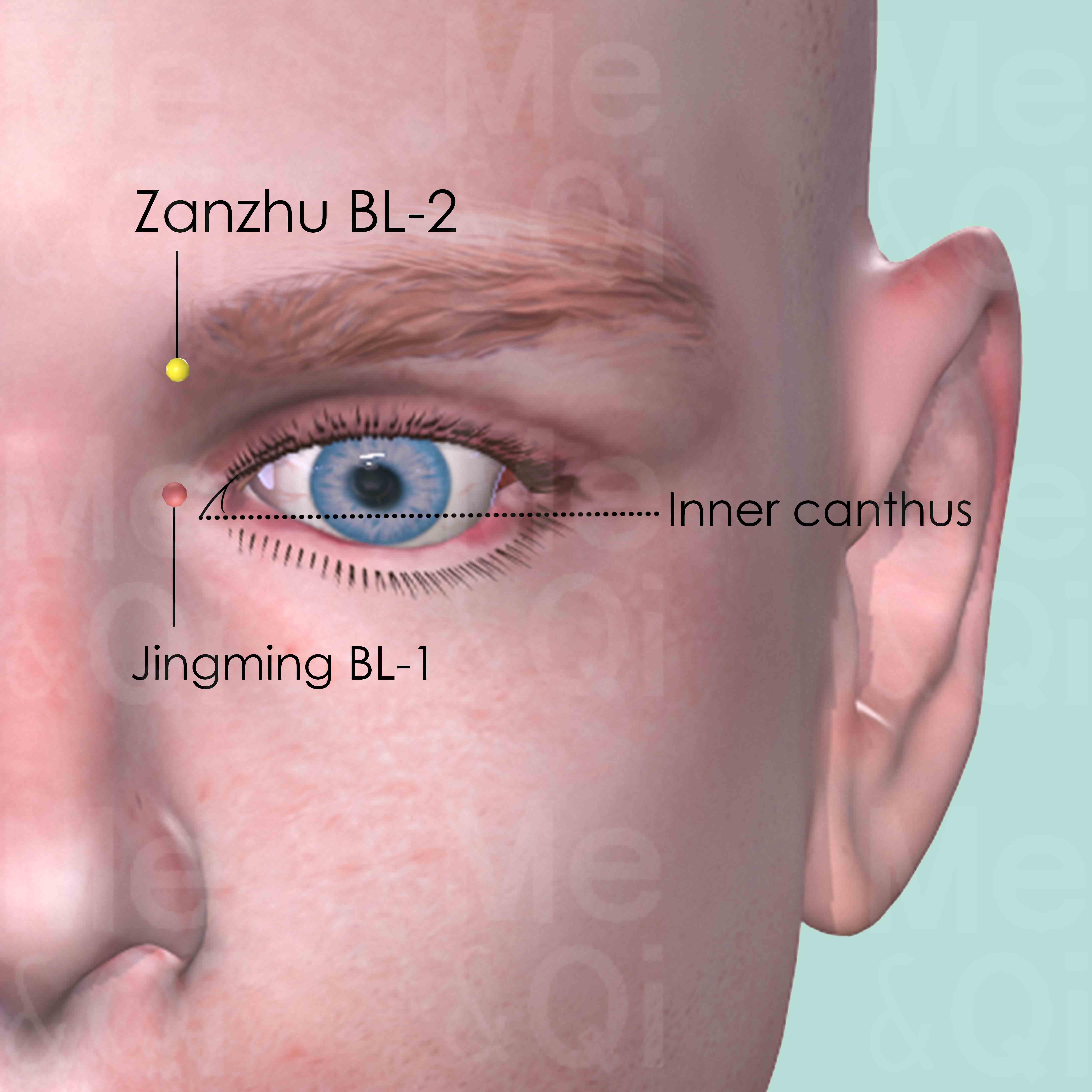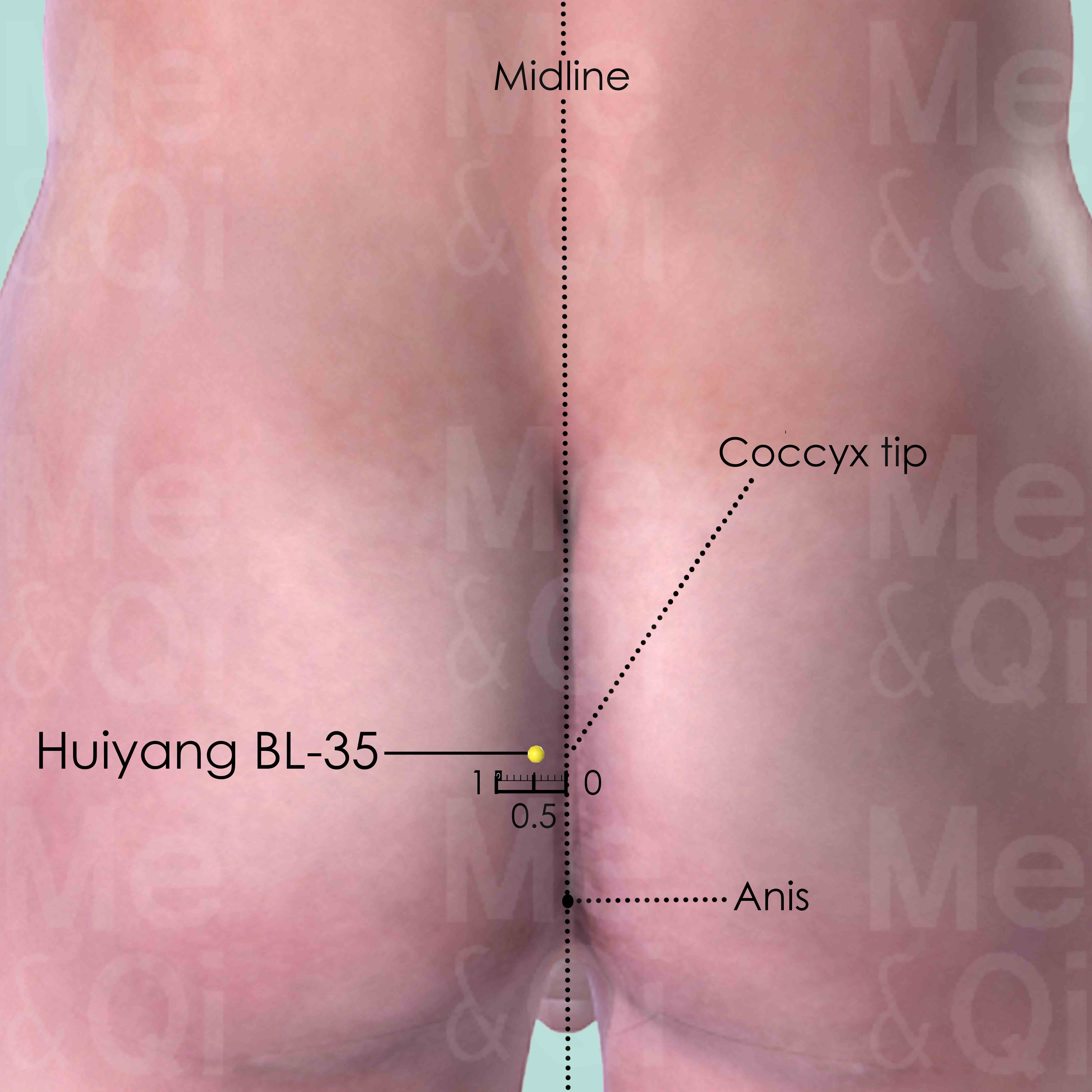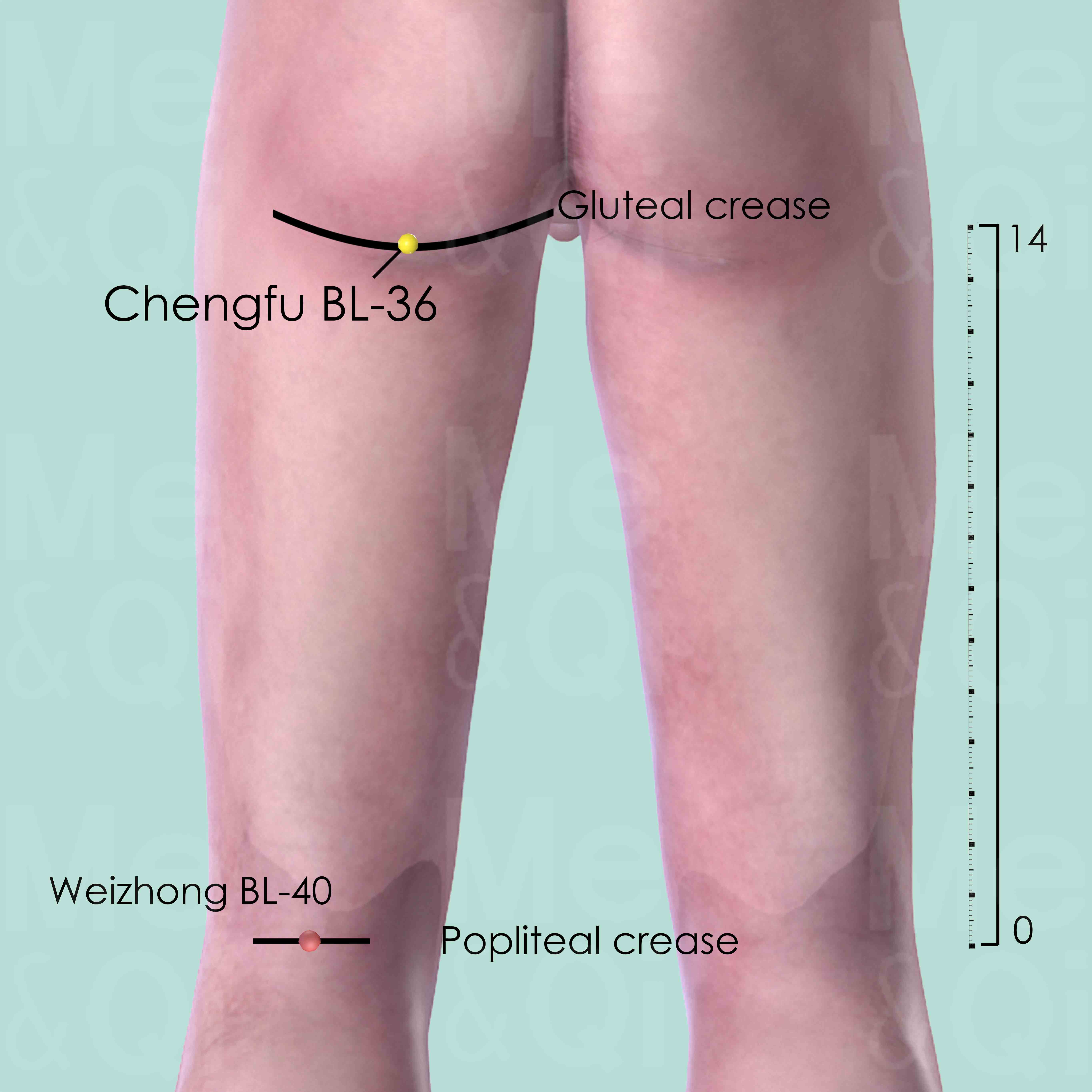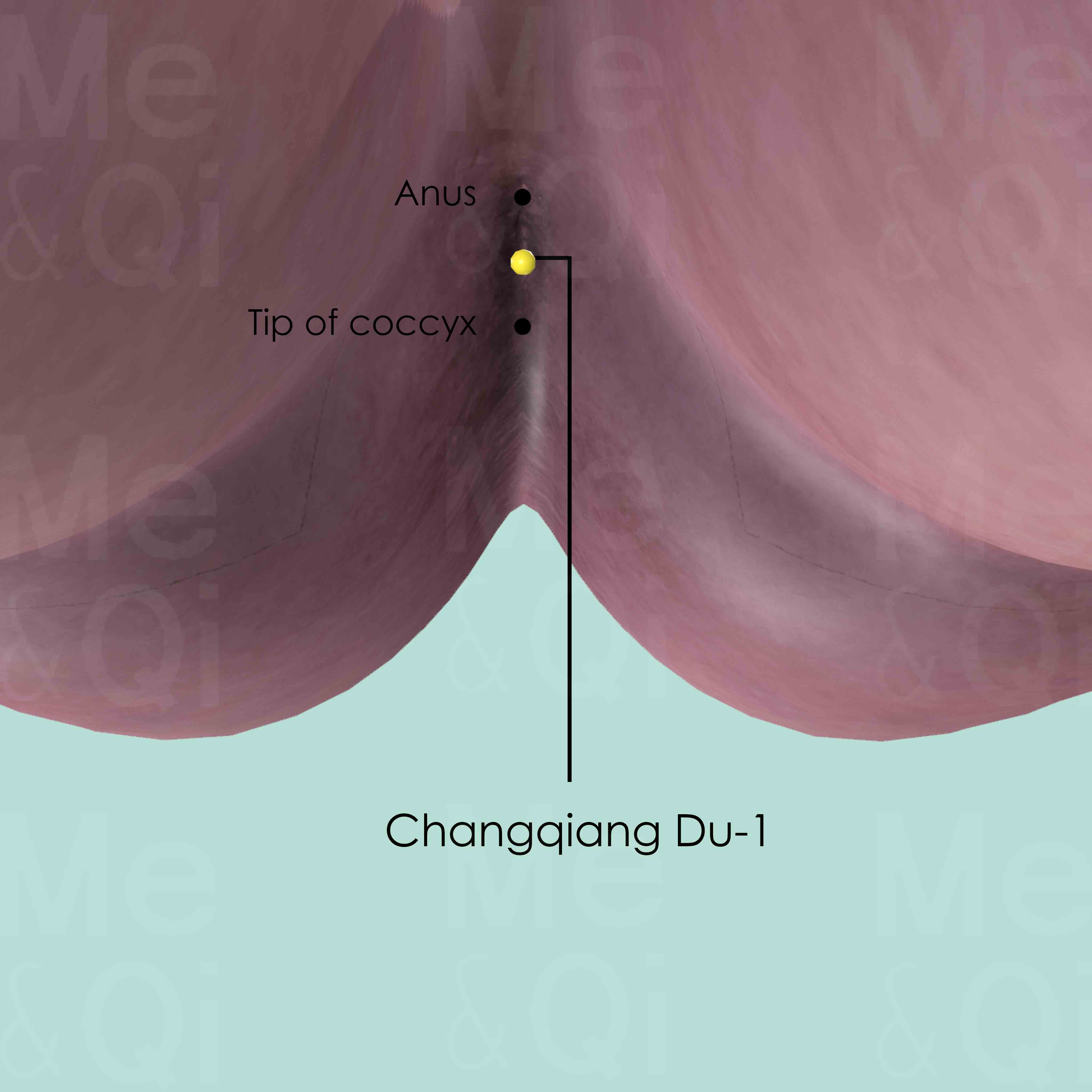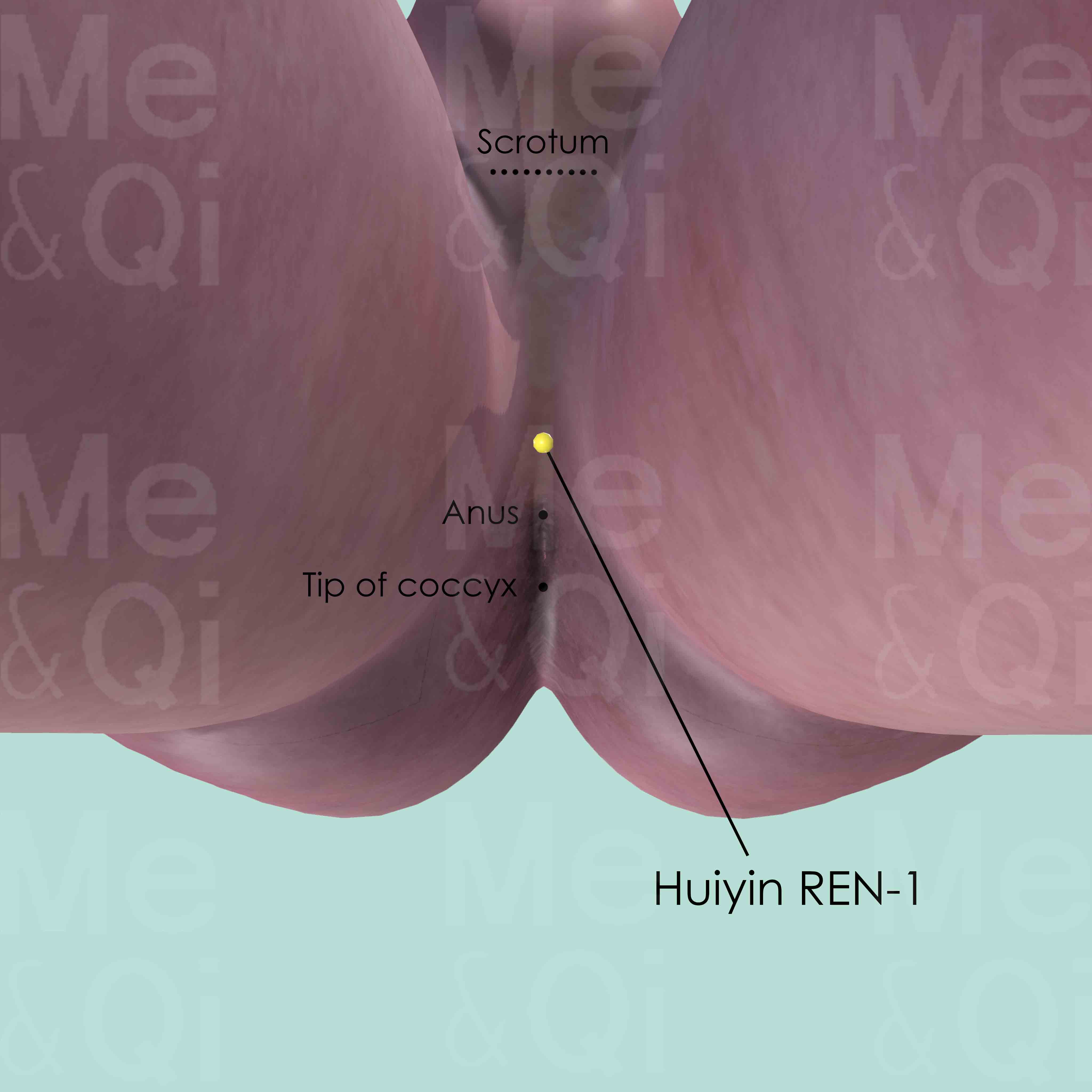Hemorrhoidsaccording to TCM
Symptom family: Hemorrhoid Symptoms
Sub-symptom(s): Bleeding Hemorrhoids Chronic Hemorrhoids Postpartum Hemorrhoids Haemorrhoid Pain Haemorrhoids Swelling
What is Hemorrhoids?
Hemorrhoids, commonly known as piles, are swollen veins in the lower part of the anus and rectum. When the walls of these vessels are stretched, they become irritated. Though hemorrhoids can be unpleasant and painful, they are easily treatable and very common. Various forms, including bleeding hemorrhoids, chronic hemorrhoids, and postpartum hemorrhoids, can manifest differently, ranging from mild discomfort to significant pain, impacting daily activities.
How does TCM view Hemorrhoids?
Traditional Chinese Medicine (TCM) interprets hemorrhoids through the lens of imbalance and disharmony within the body's energy systems. Unlike the Western approach that typically focuses on the symptoms, TCM aims to identify and address the root cause of the condition.
It considers hemorrhoids as a manifestation of underlying issues such as Qi (energy) Copplapsing, Dampness accumulation, or Blood Stasis. TCM stresses the importance of diagnosing the specific pattern of disharmony to tailor the treatment effectively, thereby not just alleviating the symptoms but also rectifying the fundamental imbalance.
Root Causes of Hemorrhoids in TCM
In TCM, the development of hemorrhoids is often attributed to several key patterns of imbalance, particularly Qi Sinking or Qi Collapsing. For example, Qi Sinking can lead to Large Intestine collapse, manifesting symptoms such as chronic diarrhea, generalized fatigue, and a craving for hot beverages alongside hemorrhoids.
Similarly, general Qi Collapsing or Qi Sinking could result in various prolapses, including hemorrhoids, due to the weakened energy unable to hold the body's structures in place. TCM treatments aim to strengthen the Qi and address the root cause of the symptoms through a combination of herbal remedies and acupuncture.
Explore below more details about what might cause Hemorrhoids according to TCM.
- By Syndrome
- By Organ
- Qi Sinking
- Large Intestine
- Spleen
Qi Sinking
Qi Sinking is a pattern of disharmony in TCM where the body's energy, or Qi, is thought to "sink" or drop down. Imagine a balloon slowly deflating and falling; that's similar to what happens with Qi Sinking. This can lead to feelings of heaviness, fatigue, and even physical symptoms like prolapse of organs or frequent urination. It's as if the body's energy, which usually supports and holds things in place, isn't able to do its job properly. TCM views this as an imbalance where the uplifting and supporting qualities of Qi are weakened.... see more
Qi Sinking Patterns That Can Lead to Hemorrhoids
Common Symptoms: Anus Prolapse Generalized Fatigue Lack Of Appetite Chronic Diarrhea Uterine Prolapse Prolapsed Bladder Stomach Prolapse Diarrhea
| Pattern Name | Relevant Symptoms | Relevant Formulas |
|---|---|---|
| Large Intestine collapse | Haemorrhoids, Chronic diarrhea, Anus prolapse, Hemorrhoids, Generalized fatigue, Cold extremities, Lack of appetite, Mental exhaustion, Craving for hot beverages... see more | Bu Zhong Yi Qi Tang |
| Qi Collapsing or Qi Sinking | Hemorrhoids, Uterine prolapse, Prolapsed bladder, Stomach prolapse, Nephroptosis, Anus prolapse, Bearing down sensation in abdomen, Chronic diarrhea, Frequent and urgent urination, Urinary incontinence, Generalized fatigue, Low energy, Intestines prolapse, Vaginal prolapse... see more | Bu Zhong Yi Qi Tang | Du Shen Tang |
| Spleen Qi Sinking | Hemorrhoids, Lack of appetite, Slight abdominal distension after eating | Bu Zhong Yi Qi Tang |
Large Intestine
In TCM the Large Intestine is primarily seen as responsible for the absorption of fluids and the excretion of waste. It is closely related to the Lung in terms of energy flow and function, reflecting the interconnectedness of organ systems in TCM. When the Large Intestine malfunctions, it can lead to issues such as constipation or diarrhea, abdominal pain, and an inability to let go of emotional waste, like holding onto grief or stress. This is in line with the TCM view that the physical and emotional aspects of health are deeply connected. An imbalanced Large Intestine can also manifest as skin problems, signifying the organ’s role in eliminating toxins and maintaining balance in the body’s internal environment.... see more
Large Intestine Patterns That Can Lead to Hemorrhoids
| Pattern Name | Relevant Symptoms | Relevant Formulas |
|---|---|---|
| Large Intestine collapse | Haemorrhoids, Chronic diarrhea, Anus prolapse, Hemorrhoids, Generalized fatigue, Cold extremities, Lack of appetite, Mental exhaustion, Craving for hot beverages... see more | Bu Zhong Yi Qi Tang |
Spleen
In TCM the Spleen plays a vital role in digestion and transformation, converting food into energy and nutrients, and overseeing the distribution of Qi and Blood. It's also crucial in maintaining the health of muscles and limbs and ensuring the blood remains within the vessels. When the Spleen malfunctions in TCM, it can lead to a variety of issues such as digestive disorders, fatigue, weak muscles, bloating, and a feeling of heaviness. It can also cause a pale complexion, poor appetite, and a tendency to bruise easily. Emotionally, a Spleen imbalance is often associated with excessive worry or overthinking, reflecting its role in the interplay between physical and mental health.... see more
Spleen Patterns That Can Lead to Hemorrhoids
| Pattern Name | Relevant Symptoms | Relevant Formulas |
|---|---|---|
| Spleen Qi Sinking | Hemorrhoids, Lack of appetite, Slight abdominal distension after eating | Bu Zhong Yi Qi Tang |
TCM Herbal Formulas for Hemorrhoids
To combat hemorrhoids, TCM relies on specific formulas that tonify Qi, such as Bu Zhong Yi Qi Tang, enriched with Milkvetch Roots (Huang Qi), a potent herb for boosting Qi. This approach aims to enhance the body's energy, thereby rectifying the underlying imbalances that contribute to hemorrhoids. The selection of the formula and herbs is meticulously tailored to align with the individual's unique pattern of disharmony, ensuring a holistic and effective treatment.
Explore below some TCM herbal formulas used to address hemorrhoids, organized by cause and by formula type.
- By Cause
- By Formula Type
- Qi Sinking
- Formulas that purge heat accumulation
- Formulas that tonify qi
- Formulas that release the exterior and purge the interior
- Formulas that stop bleeding
- Formulas that warm the middle and dispel cold
- Formulas that moisten intestines and unblock bowels
- Formulas that rescue devastated yang
- Formulas that bind up intestines and secure abandoned conditions
- Formulas that simultaneously attack and tonify
- Formulas that enrich yin and moisten dryness
Top Formula for Qi Sinking:
Bu Zhong Yi Qi Tang
Suitable for Qi Sinking patterns that may cause hemorrhoids, such as Large Intestine collapse or Qi Collapsing or Qi Sinking
Learn moreAll Formulas Recommended for Hemorrhoids Caused by Qi Sinking
| Formula | Patterns Suitable For |
|---|---|
| Bu Zhong Yi Qi Tang | Large Intestine collapse, Qi Collapsing or Qi Sinking, Spleen Qi Sinking |
| Du Shen Tang | Qi Collapsing or Qi Sinking |
Formulas that tonify Qi
These formulas are suitable for some hemorrhoids-causing patterns like Large Intestine collapse or Qi Collapsing or Qi Sinking.
One such formula is Bu Zhong Yi Qi Tang, with milkvetch root as a key herb.
Formulas that rescue devastated Yang
These formulas are suitable for some hemorrhoids-causing patterns like Qi Collapsing or Qi Sinking.
One such formula is Du Shen Tang, with ginseng as a key herb.
Formulas that purge Heat accumulation
Hemorrhoids can be treated by these formulas if it arises from an excess of internal heat, needing actions that clear heat and reduce its intensity.
One such formula is Da Cheng Qi Tang, with rhubarb as a key herb.
Other formulas of this category are listed in the table below.
All "formulas that purge heat accumulation" recommended for hemorrhoids
| Formula | Patterns Suitable For (if applicable) |
|---|---|
| Da Cheng Qi Tang | Not applicable |
| Xiao Cheng Qi Tang | Not applicable |
Formulas that release the Exterior and purge the Interior
Hemorrhoids can be treated by these formulas if it is due to external pathogens combined with internal accumulation, needing actions that address both aspects.
One such formula is Fang Feng Tong Sheng San, with saposhnikovia root as a key herb.
Formulas that stop bleeding
Hemorrhoids can be treated by these formulas when it is caused by various factors leading to bleeding, requiring hemostatic actions.
One such formula is Huai Jiao Wan, with pagoda tree pods as a key herb.
Formulas that warm the middle and dispel Cold
Hemorrhoids can be treated by these formulas when it is due to cold in the middle jiao (digestive region), necessitating warming and cold-dispelling actions.
One such formula is Huang Qi Jian Zhong Tang, with milkvetch root as a key herb.
Formulas that moisten Intestines and unblock bowels
Hemorrhoids can be treated by these formulas if it results from dryness affecting the intestines, leading to constipation or difficulty in bowel movement.
One such formula is Ma Zi Ren Wan, with hemp seeds as a key herb.
Formulas that bind up Intestines and secure abandoned conditions
Hemorrhoids can be treated by these formulas if it is caused by severe weakness leading to symptoms related to the Intestines or the lower Abdomen.
One such formula is Tao Hua Tang, with red halloysite as a key herb.
Formulas that simultaneously attack and tonify
Hemorrhoids can be treated by these formulas if it results from a combination of deficiency and excess conditions, needing both tonification and purging actions.
One such formula is Zeng Ye Cheng Qi Tang, with ningpo figwort root as a key herb.
Formulas that enrich Yin and moisten Dryness
Hemorrhoids can be treated by these formulas when it is due to a deficiency in Yin leading to dryness, calling for nourishing Yin and moistening actions.
One such formula is Zeng Ye Tang, with ningpo figwort root as a key herb.
Acupoints for Hemorrhoids
TCM also employs acupuncture as a strategic intervention for hemorrhoids, targeting specific acupoints to alleviate symptoms and address the root causes. Acupoints along the Bladder Channel, such as Chengfu BL-36 and Chengshan BL-57, are frequently utilized for their effectiveness in removing obstructions from the Channel and treating hemorrhoids. Additionally, the Directing Vessel's Huiyin REN-1 point is known for its ability to regulate the lower orifices and clear dampness, offering relief from hemorrhoid discomfort. Through precise stimulation of these points, TCM can significantly reduce hemorrhoid symptoms and contribute to long-term wellness.
Explore below some acupoints used to address hemorrhoids, organized by meridian.
- By Meridian
- Bladder Channel
- Governing Vessel
- Spleen Channel
- Extra Points: Upper Extremities (EX-UE)
- Directing Vessel
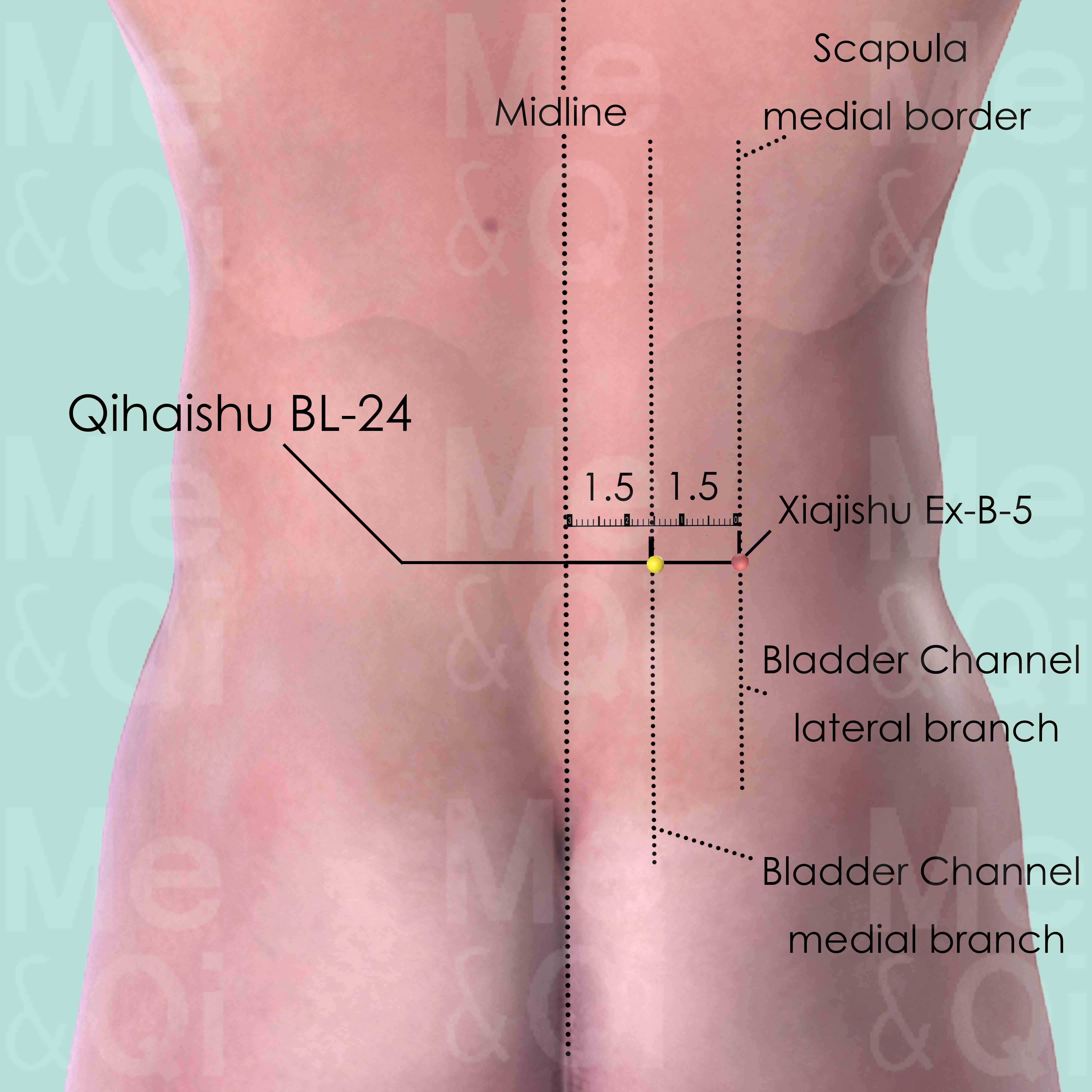
Qihaishu BL-24
1.5 cun lateral to the lower border of the spinous process of the 3rd lumber vertebra (L3).
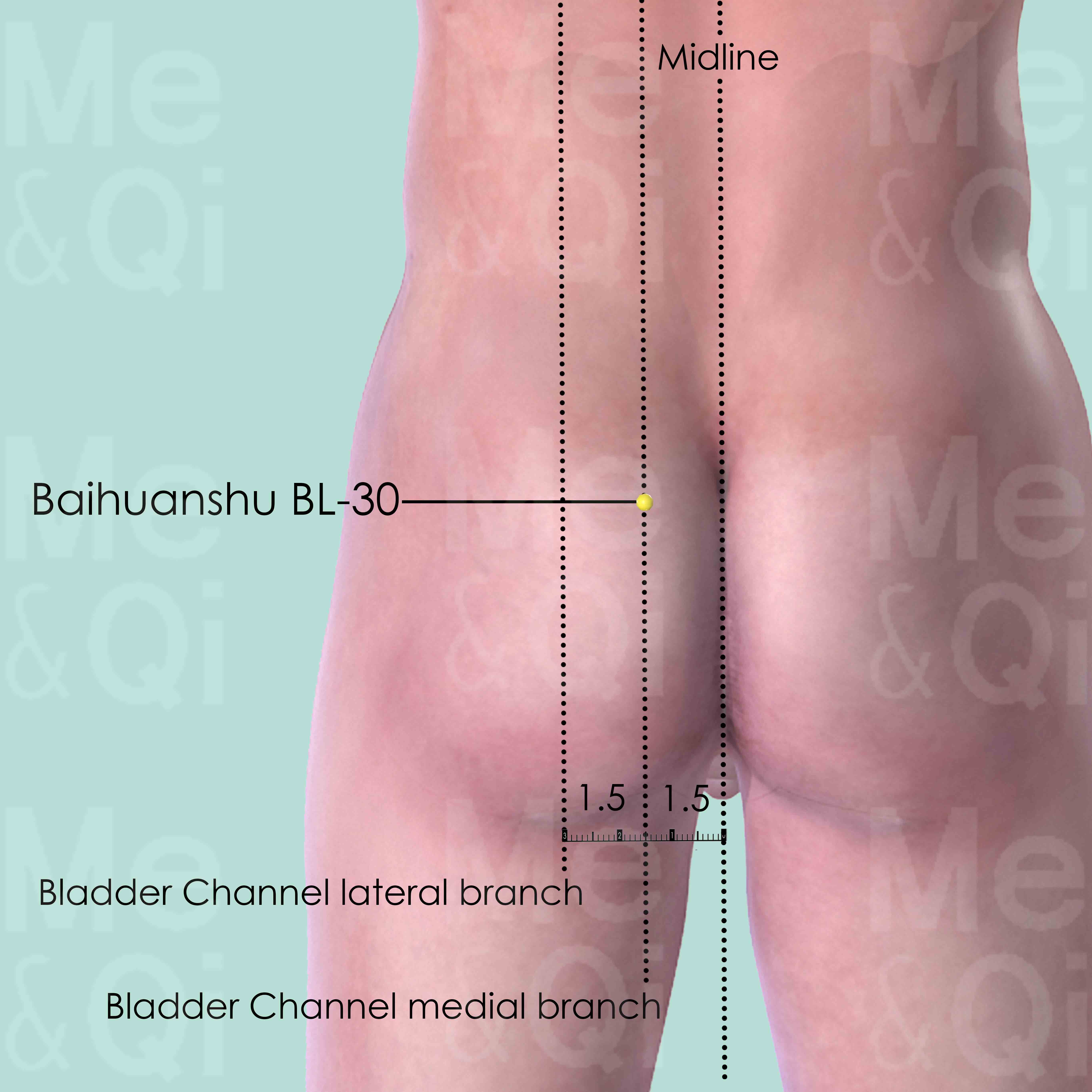
Baihuanshu BL-30
At the level of the 4th posterior sacral foramen, 1.5 cun lateral to the posterior midline.
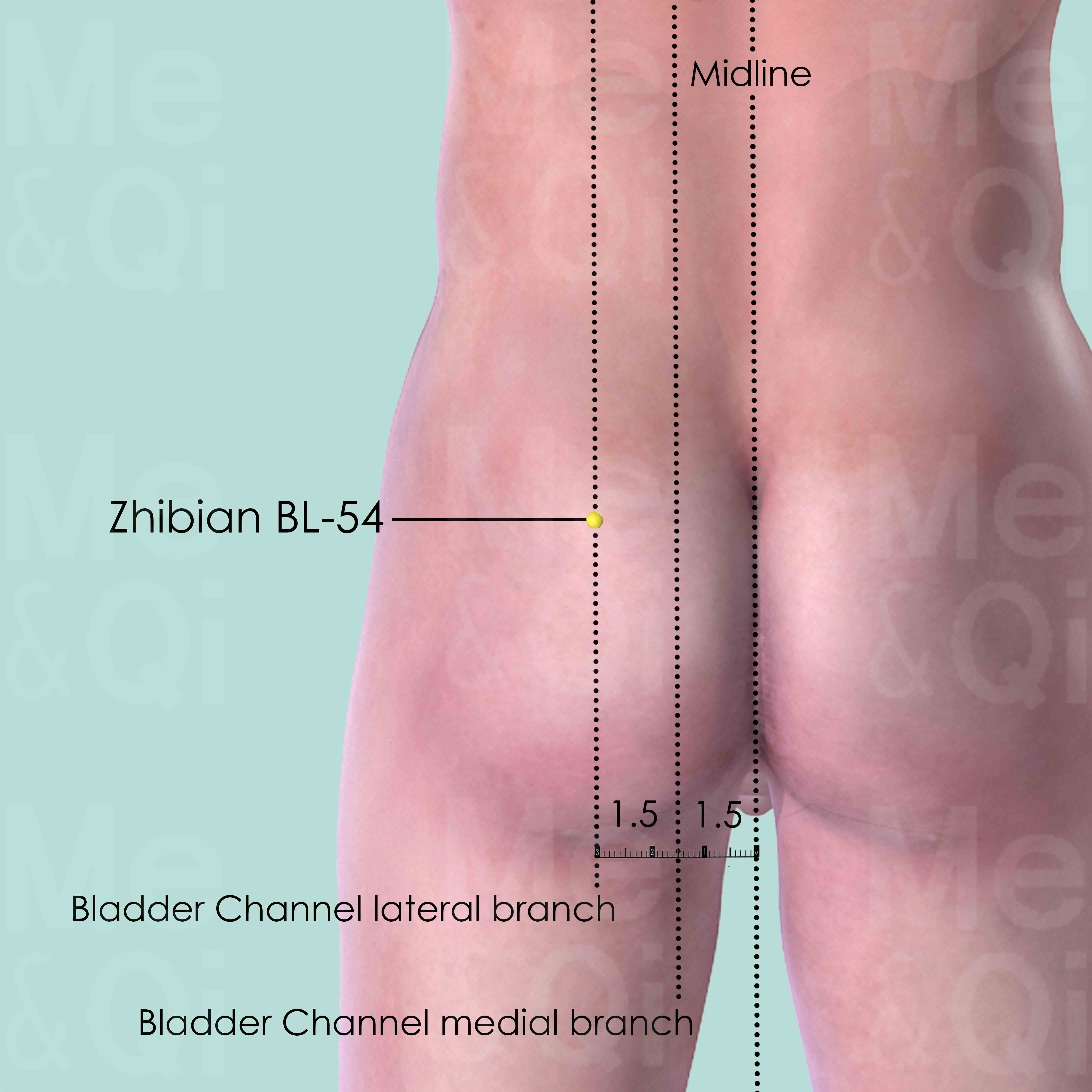
Zhibian BL-54
At the level of the 4th posterior sacral foramen, 3 cun lateral to the posterior midline.
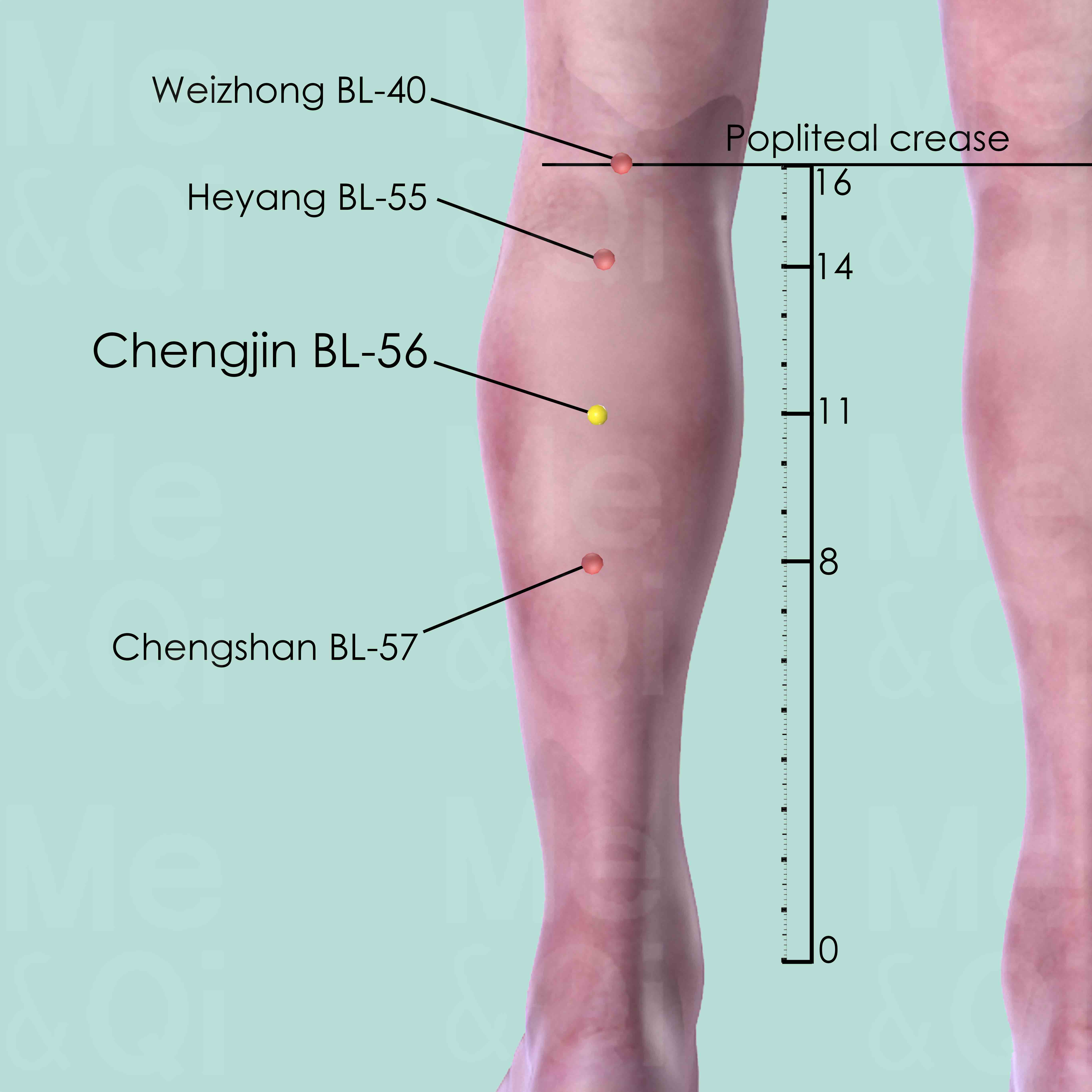
Chengjin BL-56
5 cun inferior to Weizhong BL-40 which is the midpoint of the popliteal crease. In the center of the belly of gastrocnemius muscle, midway between Heyang BL-55 and Chengshan BL-57.
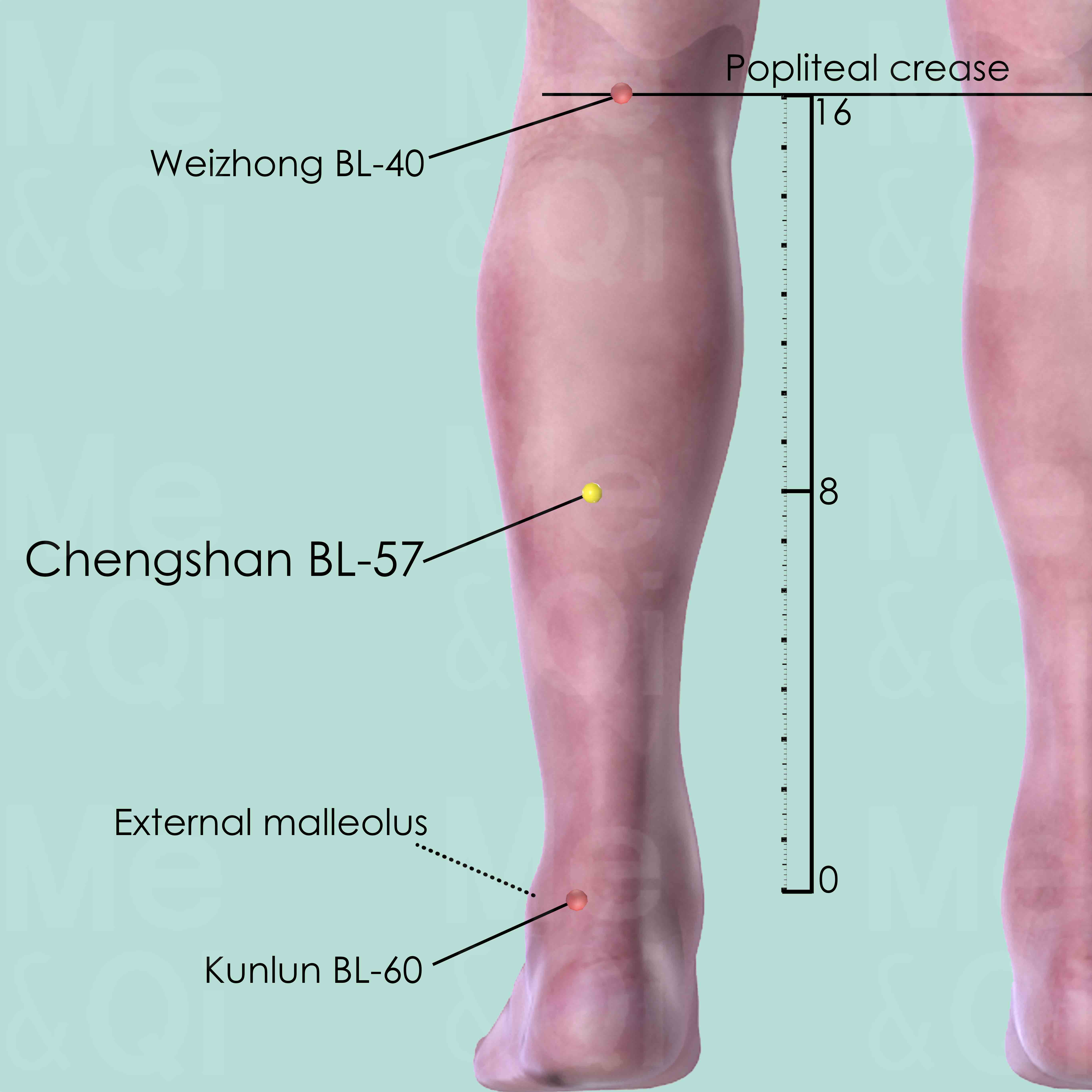
Chengshan BL-57
Directly below the belly of the gastrocnemius muscle and between the two heads of the muscle, on the line connecting Weizhong BL-40 and Kunlun BL-60, about 8 cun below Weizhong BL-40.
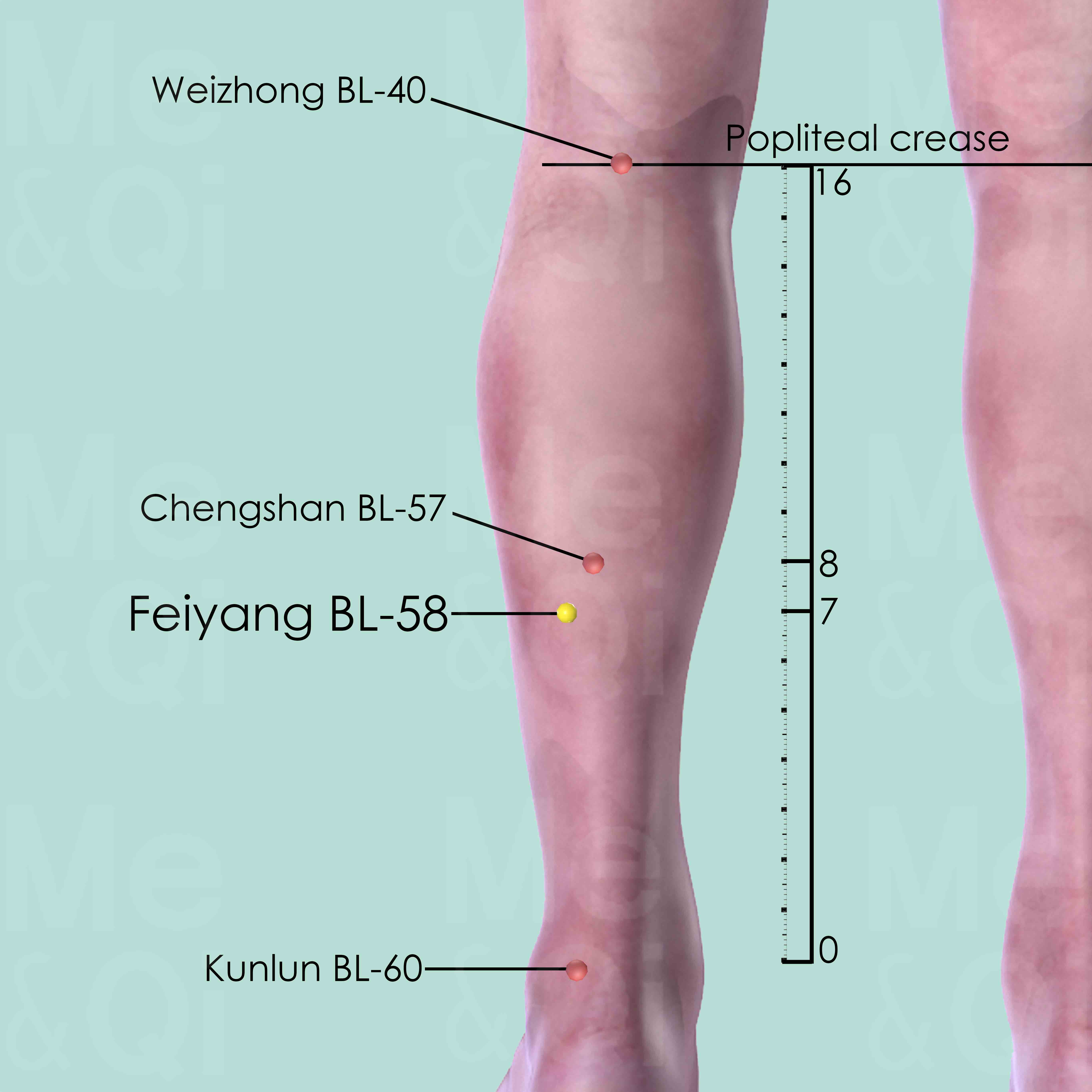
Feiyang BL-58
On the posterior border of fibula, about 1 cun inferior and lateral to Chengshan BL-57, 7 cun directly above Kunlun BL-60.
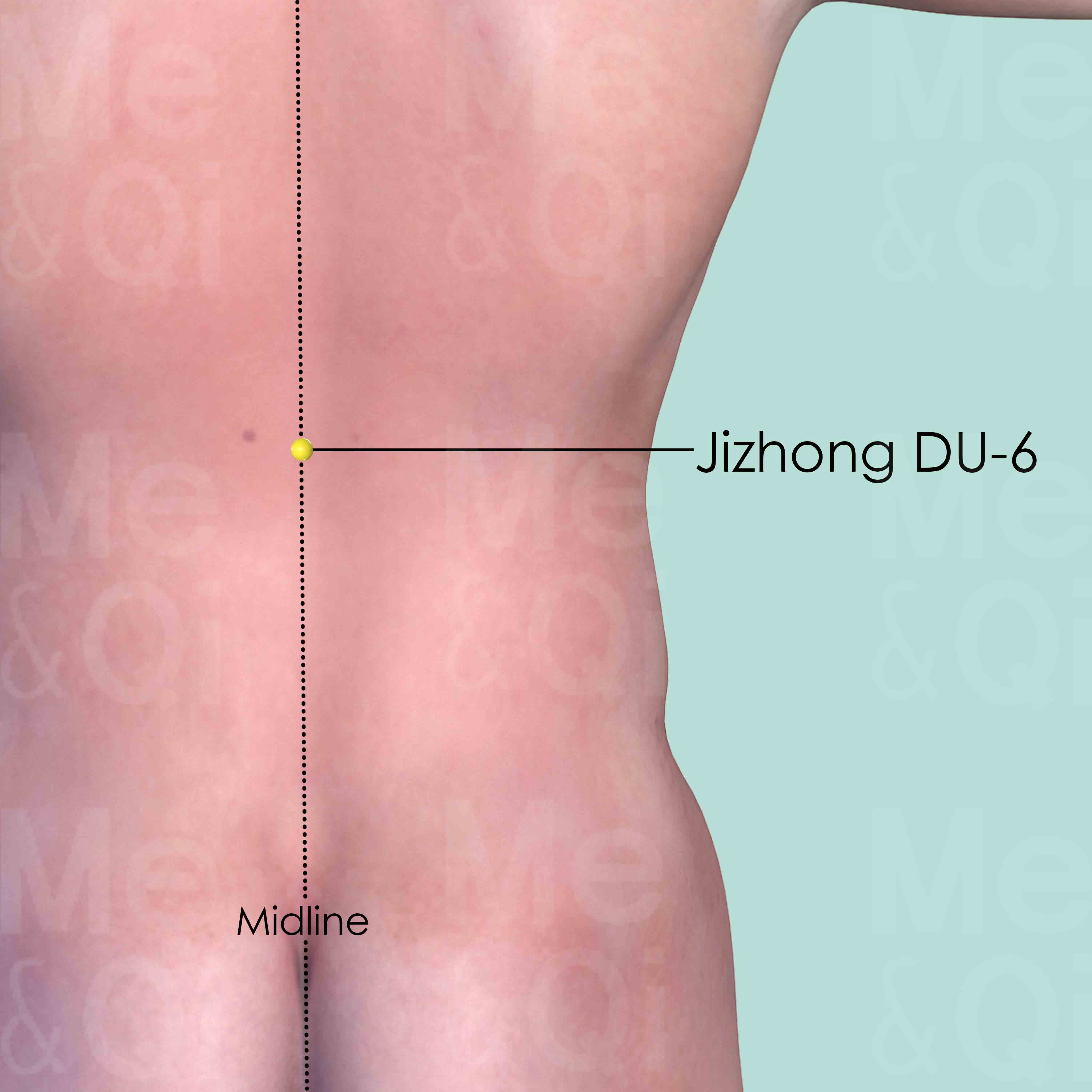
Jizhong DU-6
On the back midline, in the depression below the spinous process of the 11th thoracic vertebra (T11).
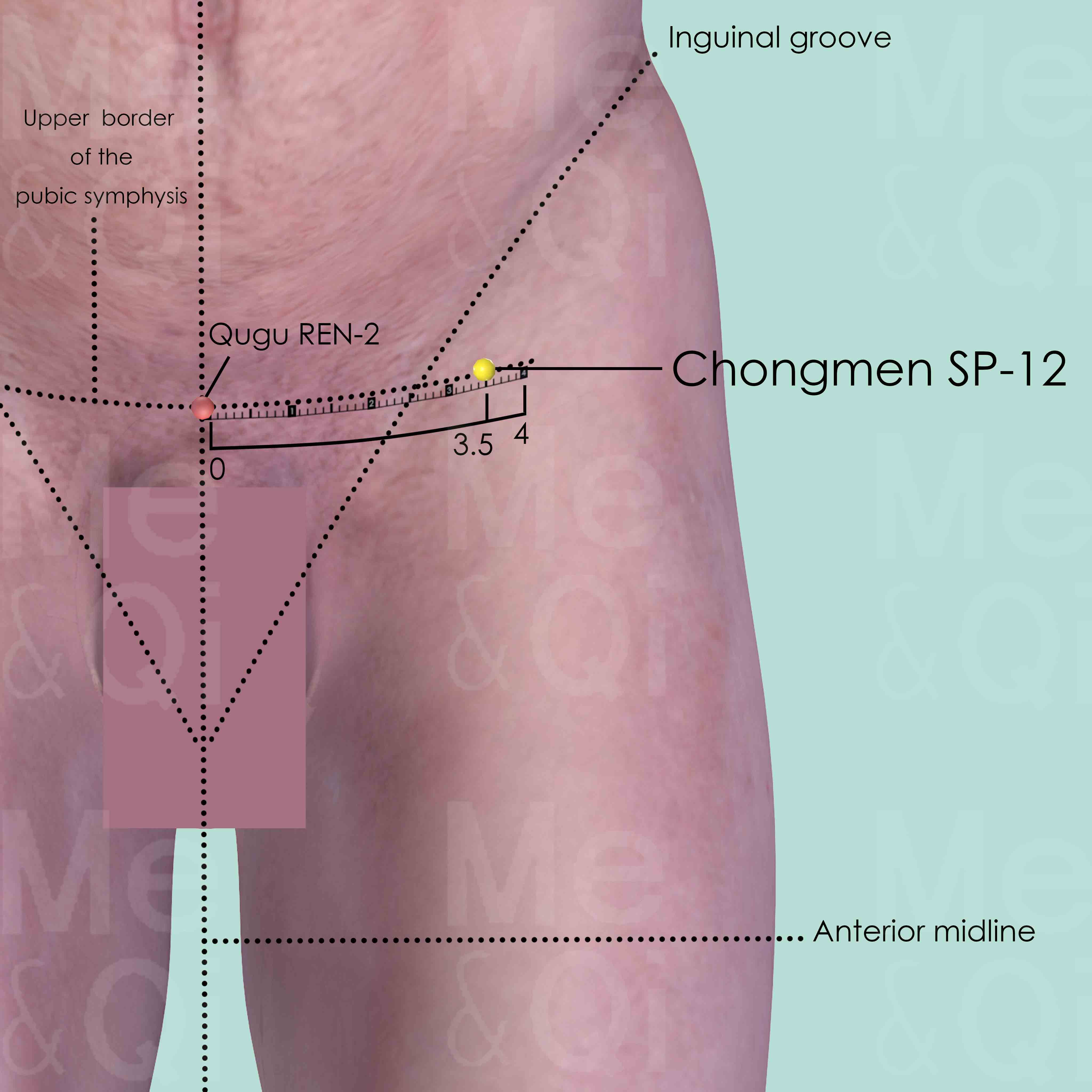
Chongmen SP-12
Lateral to the inguinal groove, on the immediate lateral side of the femoral artery, at the level of the upper border of symphysis pubis, 3.5 cun lateral to Qugu REN-2.
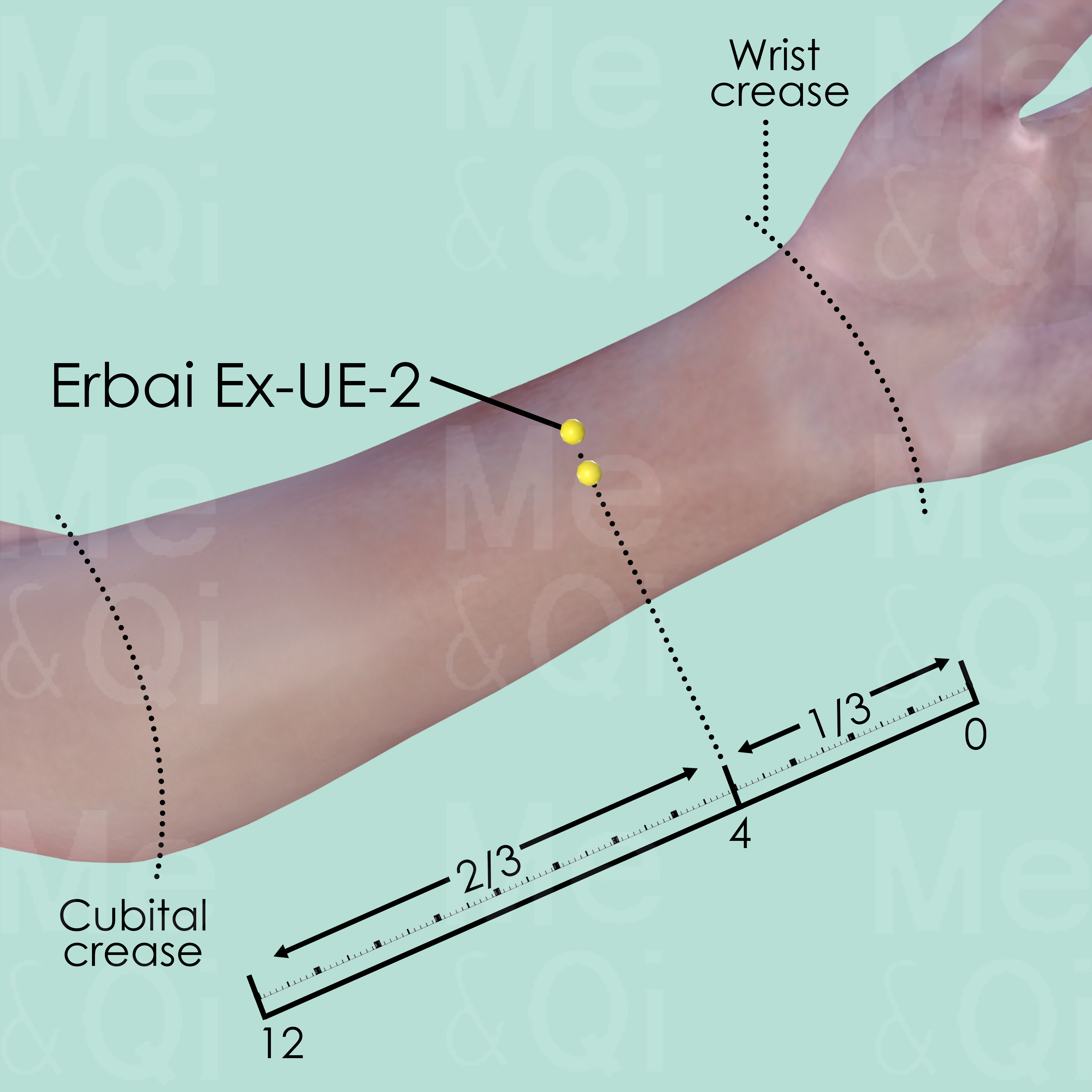
Erbai Ex-UE-2
A pair of points on the palmar aspect of the forearm, 4 cun proximal to the wrist joint space (most distal wrist crease), on either side of the tendon of the flexor carpi radialis muscle.

